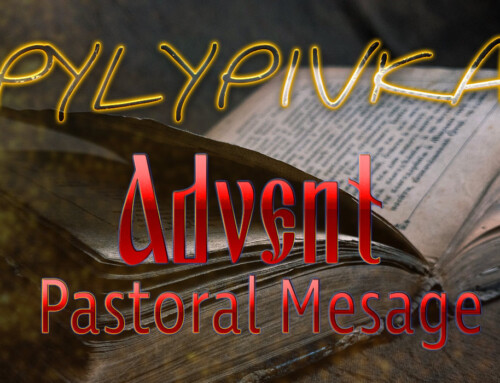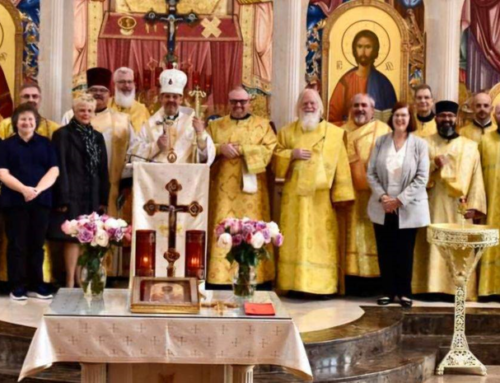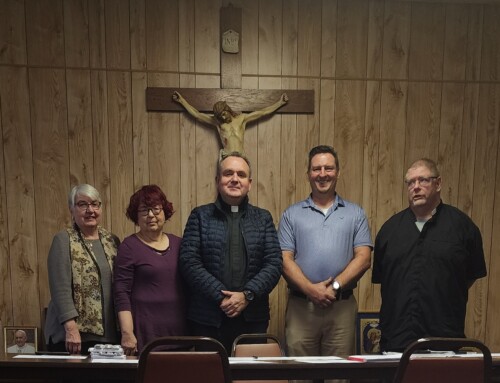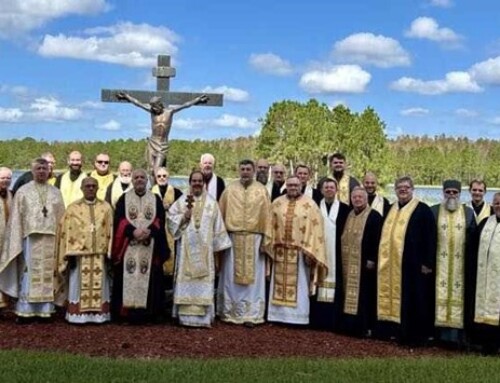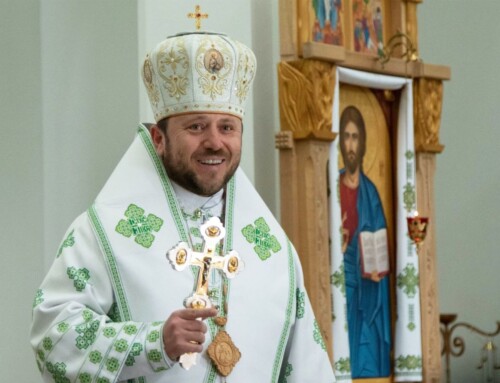Catechetical Sermons on the Divine Liturgy
Preface
Byzas’ Place (Byzantium) began as a small port city on the European side of the Bosporus settled originally by Thracians more than eleven centuries before Christ and called Lygos. It became a Greek settlement about six centuries before Christ, and the Romans took the site in 196 AD. The original liturgical tradition for the celebration of the Eucharist at Byzantium was the “West Syrian” tradition of Antioch in Syria, where we were first called Christians, and which today is represented by the Maronite Church. When the Emperor Constantine chose the site for his new capital to be called New Rome and then better known as Constantinople (Constantine’s City), the liturgy there began to develop in its own way from the fourth to eight centuries. It had become independent from Antioch in 381 AD. One would presume that Constantine brought many courtiers from Western Europe which prompted some changes in the liturgical practices over time, and which developed eventually into the Patriarchate of Constantinople. So over the centuries the format for the Divine Liturgy has changed, with some things being removed or else said silently by the clergy, and with some new things being inserted, or elements being rearranged. As a result of all this fluidity, the logical order of the Liturgy is sometimes obscured or twisted. And perhaps no part has changed as much as the opening portion, the gathering.
Writing in the mid-second Christian century at Rome, Justin Martyr—who had established a catechetical school for adults there—give an outline of the order for the celebration of the Eucharist. He writes, “No one may share the Eucharist with us unless he believes that what we teach is true, unless he is washed in the regenerating waters of baptism for the remission of his sins, and unless he lives in accordance with the principles given to us by Christ.” To this day those prerequisites are still required for an ethical and fruitful sharing in the Eucharist. He goes on to give an outline of the service. “On Sunday we have a common assembly of all our members, whether they live in the city or the countryside. The recollections of the apostles or the writings of the prophets are read as long as there is time. When the reader has finished, the leader of the assembly speaks to us, urging everyone to imitate the examples of virtue we have heard in the readings. Then we all stand up to pray together. At the conclusion of our prayer, bread, wine and water are brought out. The leader offers prayers and gives thanks to the best of his ability, and the people give their assent by saying ‘Amen!’ The Eucharist is distributed and everyone partakes, then the deacons take it to those who are absent.” St. Justin does mention that those with the resources make a contribution if they wish, and the funds are used for the needy, etc. The collection seems to be made outside the ritual proper. This pattern remains the skeleton on which all the other rites and ceremonies are situated.
Catechetical Sermons on the Divine Liturgy
#1 The Gathering: “We have a common assembly.”
When we invite people to our homes we usually put the house in order and prepare some refreshments, if not a whole meal. In the format of the Eucharistic Liturgy that we use today, the priest—acting as head of the local family—prepares bread and wine, usually privately, before everyone has gathered.
For most of us, the Liturgy seems to begin as the priest proclaims “Blessed the kingdom of the Father, and of the Son and of the Holy Spirit.” This very first part of the usual order of the Divine Liturgy is the gathering—and welcoming—of family and friends. And just as in our chance and casual meetings with acquaintances on the street or in the market, we inquire about our guests as to their health, their work, their children, etc. And so today we pray for all our fellow Christians everywhere, living and dead. Originally, what we call today the Great Ektenia was offered after the gospel, and when it was moved to the beginning of the service another litany was inserted there. In the Great Ektenia we hear an echo of St. Paul’s instruction to Timothy (1 Tim. 2:2): “I ask, first of all, that supplication, prayers, intercession and thanksgiving be made for all people, for emperors and all who lead, that we may pursue a calm and quiet life in all piety and dignity.”
Gathering is not simply a pleasant social event, it is also crucial to human communal and spiritual wellbeing. The Old Testament is full of references to the assembly of the people for worship, and even the New Testament—most often just presuming that Christians will meet—reiterates the sacred character of gathering, for example in Hebrews 10:25 , where the text says, “Do not absent yourself from our gathering together, as some have the habit of doing.” One may also look at the only picture of the Last Judgment, in the Gospel of Matthew (25:35 & ff.), where the returning Jesus “will send his angels with a great trumpet blast and gather his chosen together (24:31).” In the Acts of the Apostles (2:42 & ff.) St. Luke gives what might be called “the charter of the Church,” which has four planks: the teaching of the apostles, fellowship or socializing (koinonia), the breaking of bread (probably both the Eucharist and the common meal), and to prayers. There can be no fellowship without gathering. St. Justin Martyr, writing in the middle of the second Christian century, says “On Sunday we have a common assembly of all our members, whether they live in the city or in the outlying districts.”
Let us not fail to gather with our brothers and sisters in Christ for the Lord’s Supper. And let us not come late to the gathering. After all, if we were invite to the White House and were expected at a precise time, would we casually linger and come late? Does the Lord deserve any less respect than what we would show to a government official?

